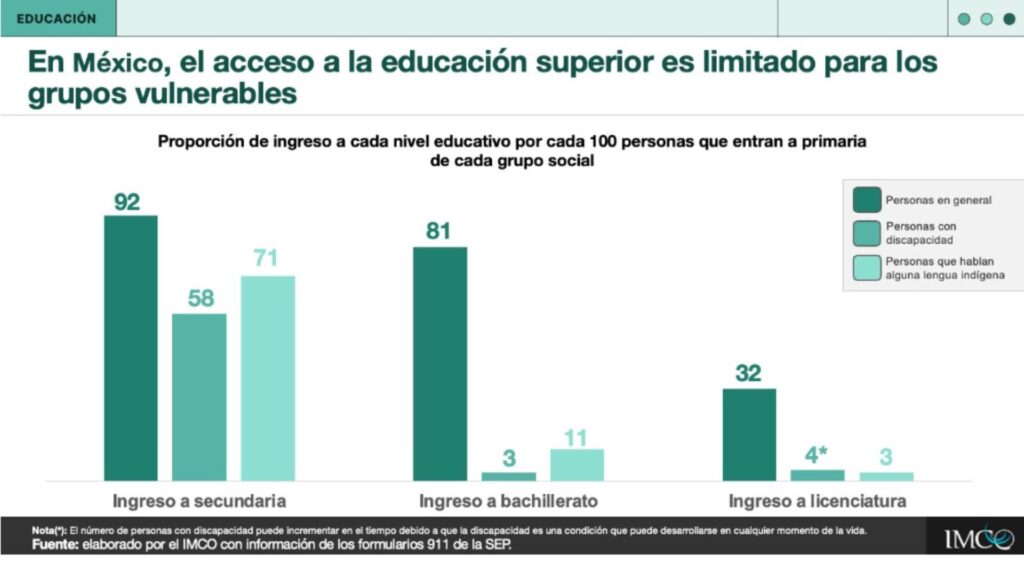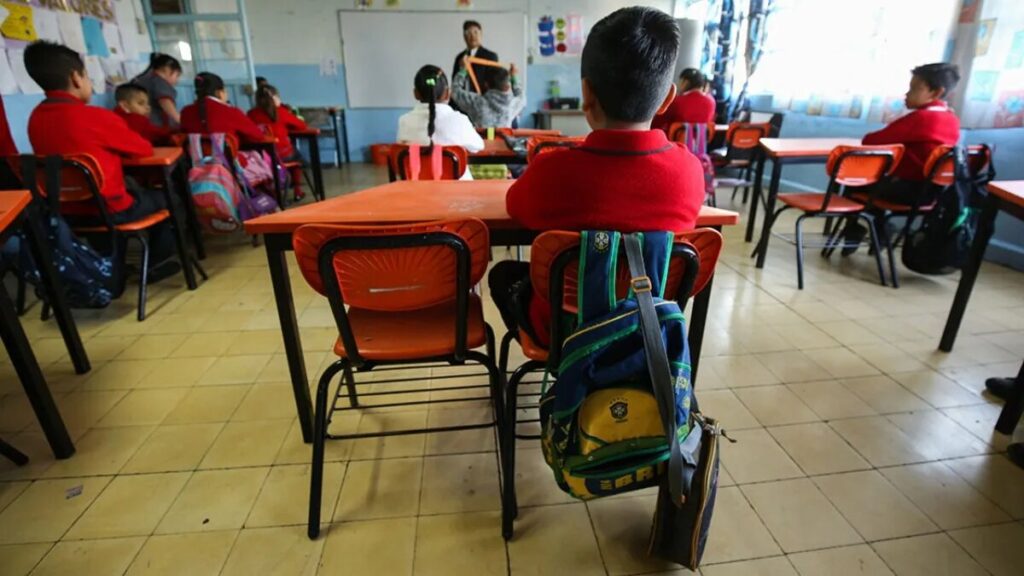At Mexico6.4 million people between the ages of 3 and 18 do not attend school, half of whom belong to a disadvantaged group, either from the poorest or the most disadvantaged. indigenous communities, rural communities, afrodescendants o people with disabilitiesthe research highlights Educational inequalities in Mexicowhich elaborated the Mexican Institute for Competitiveness.
The public policy research center states that in Mexico, 32% of students who started primary school reach higher education, but that figure is reduced to 4% in people with disabilities and 3% in people who speak an indigenous language.

These are some of the data that the research carried out by the IMCO reflects the inequality gap that exists in education in our country.
"One of the main barriers to economic and social development in Mexico is educational inequality, understood as the differences in access, available teaching resources, infrastructure and educational quality to which the educational community has access. According to the World Economic Forum, educational inequality in Mexico exceeded the average for the Latin American region and the world in 2023," he explains.
The educational quality is the sum of elements such as school infrastructure, didactic resources, teacher adequacy and educational achievement, which results in better academic performance. It involves preparing students in a comprehensive manner and providing them with the necessary tools to face the labor market, the research adds.
Factors such as socioeconomic status, teacher staffing and training, as well as access to greater connectivity can influence the quality of education students receive, the research center assures.
The data obtained from the test PISA 2022 reinforces this assertion, says the IMCOIn this assessment, 20% students from the highest income households outperformed 20% students from the lowest income households in Mathematics by 59 points. That difference is equivalent to three grades of schooling.
The document adds that in the OECD There is a high level of acceptance that the younger the students, the more interaction they require with teachers in order to obtain better results in the quality of the education they receive.
"Mexico is the OECD country with the greatest difference in this ratio between public and private secondary schools; on average, teachers in private schools serve 15 students, while it rises to 31 in public schools," he says.
IMCO argues that promoting economic growth, gender equity, strengthening public health and reducing poverty are all rooted in education. Empowering individuals and communities through equitable access to quality education generates economic and social benefits.
Its proposals to close the inequality gap are:
Generate policies that respond to the specific causes of each sociodemographic group to promote access to and permanence in school.
- That policies be formulated with information on the root causes of the problem in each population, especially vulnerable ones, so that they can access and remain in formal education.
- To have a system to identify students who are more likely to drop out of school and to design tailored prevention mechanisms.
Ensure the presence of sufficient qualified teachers to meet the country's educational needs to promote quality education.
- It is essential to have information on teachers in order to nurture educational policy, in addition to the fact that the profound changes in the educational approach require accompanying teachers in order to design lessons adapted to each group of students and manage content adjusted to their realities.
- Ensure the minimum conditions for effective learning, which implies investing in water, hygiene and sanitation systems in classrooms, electricity, sufficient desks, teaching materials, among other key elements.
The IMCO stresses that the National Commission for the Continuous Improvement of Education (Mejoredu) must generate information and diagnostics on the causes of dropout and lack of access to education on a recurring basis, and must promote more and better teacher training to promote educational quality for all Mexicans, making it a key element in closing the gap between the quality of education in Mexico and that of the rest of the world. educational inequality.
"Overcoming these educational gaps in both access and permanence among different population groups is only the first step in guaranteeing educational equality," he stresses.
The next challenge is to provide quality education to all people within the education system and ensure that socioeconomic conditions are not an obstacle, emphasizes the research of the IMCO.
Source: IMCO


